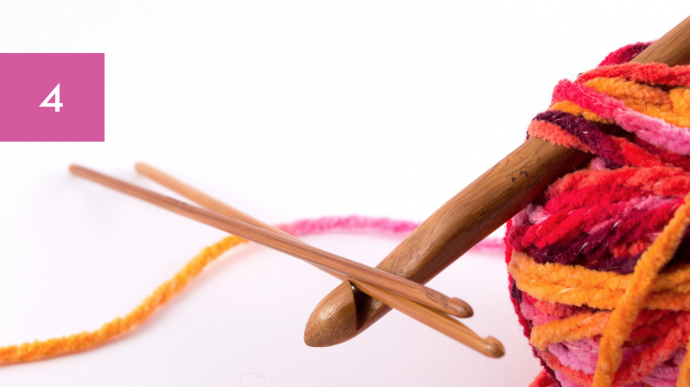When you are starting a crochet project and working into the beginning chain, does your work often look perfect? This if caused by a beginning chain that is tighter than your stitches - a really common problem in crochet and one that I suffer from. Fortunately, it’s really easily solved.
The starting chain is one of the easiest parts of the crochet process, which is probably why it’s the first thing most people learn. When you are starting a crochet project and working into the beginning chain, does your work often look perfect? This if caused by a beginning chain that is tighter than your stitches - a really common problem in crochet and one that I suffer from. Fortunately, it’s really easily solved. Since the beginning chain often ends up being one edge of your fabric, it’s a good practice to start out with a good foundation. If you’ve found yourself struggling, here are some tips for making the perfect crochet chain.
Tip 1

Work with a bigger hook for the starting chain.
Grab a hook a few sizes larger than you will be working in for the rest of the piece to do your beginning chain. Why not just try to work looser with your normal hook? It's really difficult to maintain an even tension when working in that way and you can end up with a beginning chain that looks a bit rough. I usually work one full size up to do my chain.
Tip 2

For a smooth edge, don’t twist the starting chain when working the first row. Not only will a twisted chain give you a lumpy-looking edge, it also makes it difficult to find the next loops.
Tip 3

Working into a chain will cause the loops to stretch a bit and the loops of the next chain to shrink a little. This can make it difficult to find the next loop to work into. Since the loop that was just worked into is enlarged, people often want to work another stitch into that same chain. To find the next chain, look at the stitch you just made, follow its post to the starting chain and identify which loop it’s being worked into, and then work into the next chain.
Tip 4

Sometimes you’ll make a mistake on the first row and need to pull out your work. When you rip out your work, the loops of the chain will be lumpy and misshapen. The best practice is to work the first row as carefully as possible so you don’t have to rip out your work. But, if you do have to rip out, consider re-crocheting the starting chain as well as the first row.
Tip 5

Make extra chains
Larger crochet projects, like blankets, often start with long starting chains. Large numbers of chains can be hard to keep track of, and very few things are worse than getting to the end of your first row only to find that you don’t have enough chains. Luckily, there’s an easy solution. Make more chains! Purposely make a handful of extra chains when you start your project. I usually make 5 or 6 extra, but for very long projects I may even make 10 or 15. This is also handy when designing, so I can tweak the pattern without starting over.
Tip 6

Keep the growing foundation chain under control
With the working yarn over the forefinger of your non-dominant hand, hold the piece that you are stitching with your thumb and middle finger of that same hand near the hook. As the chain gets longer, keep moving your fingers up close to the hook. This leaves your dominant hand free to maneuver the hook.








Great Tips!
Thank you so very much, Mary!
Thank you. I think I will try doing a chain with a larger hook so that my work will be more even. Thank you.
Thank you, Phyllis! Sure, a larger hook should help! Let me know, how it goes! Have a great day!